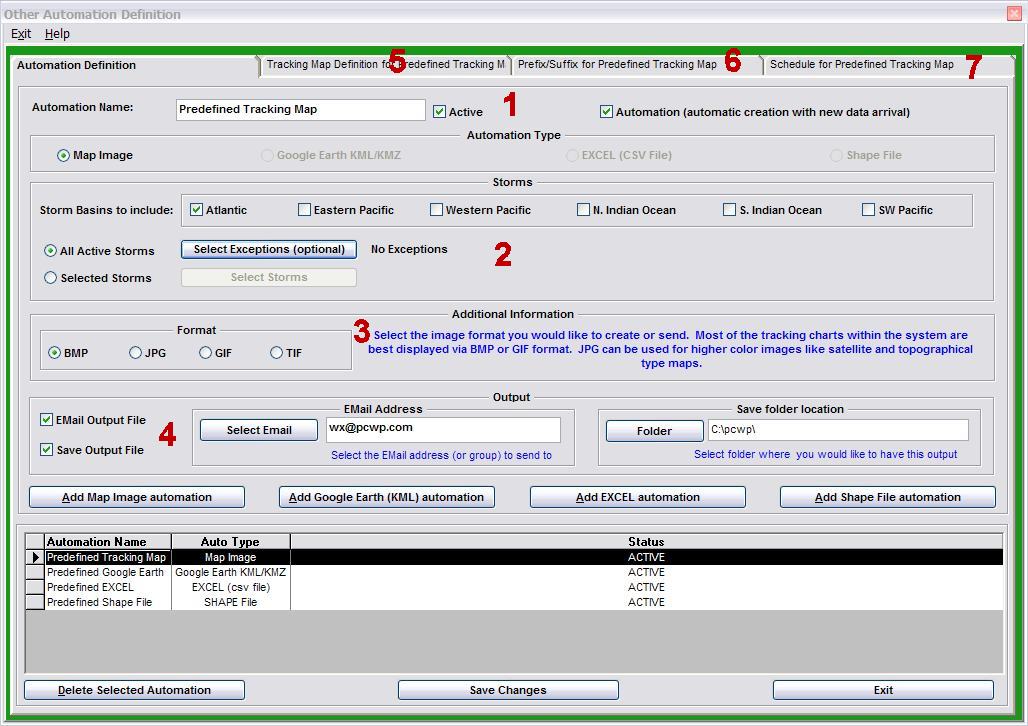
"Other" Automations Setup
An excellent video describing "Other" Automations and their setup can be found at http://www.storminfo.net/trainingvideo/2011u/auto/auto.html .
The setup of
automated “Other” Automations can be selected via the Tools menu option
or via the Command Bar Icons.
A dialog screen
is displayed showing all of the current Automations.
The system comes predefined with one of each type.
Important:
There are 2 pre-requirements to successfully Email these outputs.
1.
You
need to have setup your Email via the User Preferences Option (EMAIL Setup).
2.
You
must define the email addresses or groups you would like to send these reports to…
via the User Preferences (Email Addressbook). This
is required even if you have selected the Outlook method for emailing in the Email
setup.
The Automations
capability basically includes other automatic output that did not fit into the category
of Summary Report or EMAIL Alerts. The outputs
defined in this function are automatically generated when new storm data is received
and can be saved to a hard drive location
and/or sent via Email. There are 4 types
of “other” Automations.
More information on Automations (Automatic Output)
The following
section will discuss the setup of each type of output as well as discussing the “error
catching” feature of the setup option. Please
note that the definition of Automatic Summary Reports and Email Alerts have a similar
look and feel.
The Automations
Setup screen looks similar to the following.

Section
1, 2, 4, Tabs 6 and 7 are essentially the same for all 4 types of Automations.
Section 3 and Tab 5 are the only sections that vary by type of Automation.
Let’s
look at the sections that, for the most part, do not vary by type of Automation.
Section
1 indicates the
Name of the Automation as well as indicators
that control whether it is active and
also whether it should be automatically generated.
It is valid to have an automation that is active with the automatic option
turned off. This is typically used when you
only want to generate the automation manually… i.e.
selected from the Hurrtrak menu.
Section
2 defines the
storms you would like considered when running the automations.
The “all active storms”
selection will select only storms that are currently having advisories issued for
them. When you manually run the automations,
it will only include storms that have data no more than 18 hours old (the “age”
setting can be changed in the user options). With
this option you can specify storms to “ignore” via the Select
Exceptions command.
The “Selected
Storms” option will run the automations for only storms you manually select.
You can select those storms via the Select
Storms command.
Finally, Global/Advanced
users can select or de-select the storm basins
they want to include for storm selection. i.e.
if you are only interested in the Atlantic and Western Pacific then check only those
2 items.
Section
4 defines how
to handle the automatic output. You can select
to have the output saved to a hard drive location and/or email it.
Section/Tab
6 defines additional
text you would like included within the email… when the output is being emailed.
This is optional. See example below.
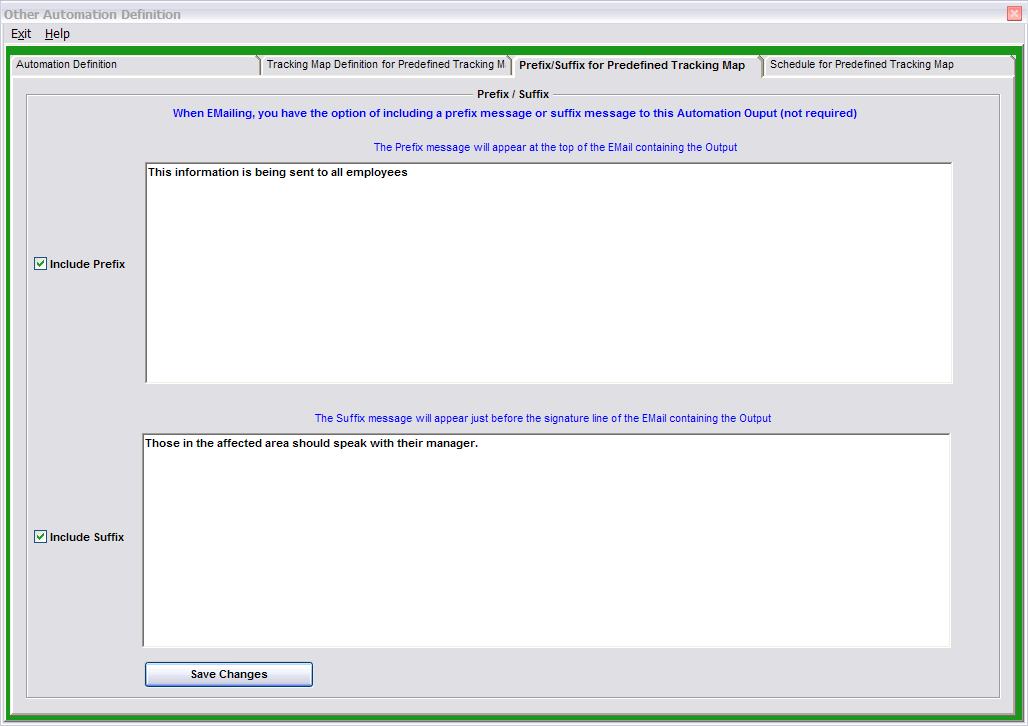
Section/Tab
7 allows the user
to adjust the schedule of when this automation can run.
In this way you can create this outputs only on certain days and times.
See example below.
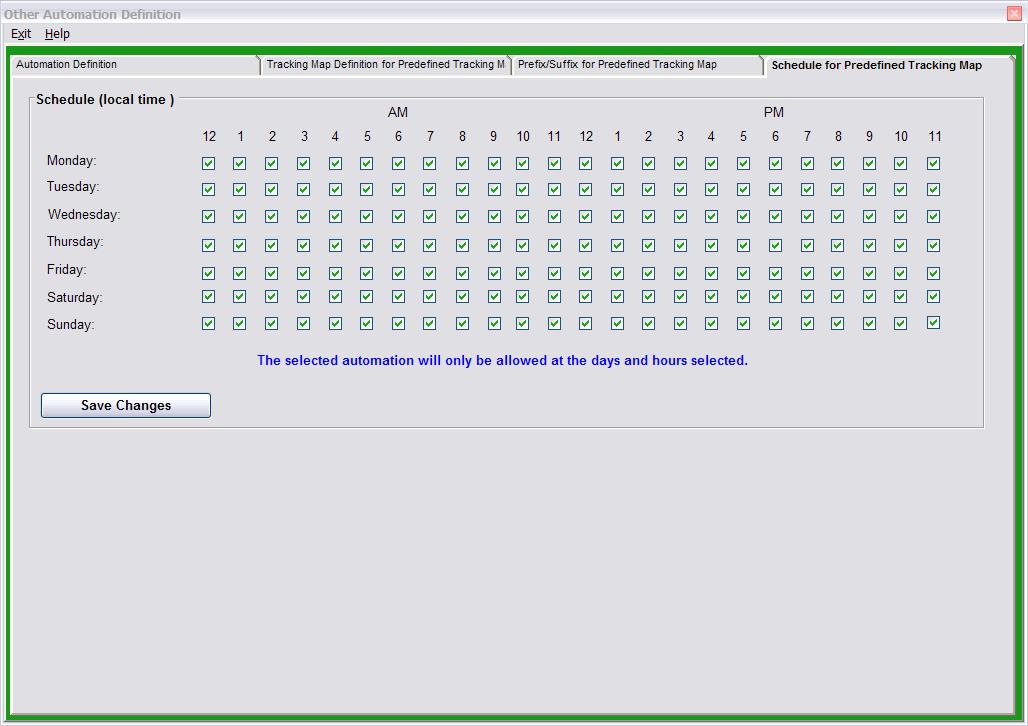
Now
let’s look at the two sections that DO vary by Automation TYPE.
Section
3 is information
that is specific to the Automation type being defined.
For the Tracking
Map Automation, this section appears like the image below.
The user can select the type of image format they prefer.

For the Google
Earth KML Automation, this section appears like the image below.
Here the user can specify KML or KMZ format for the Google Earth file.
We recommend KMZ for its smaller size.

For the EXCEL
Automation, this section appears like the image below.
The user can specify a location group, all affected Counties or all affect
Zip Codes.

The Shape
File Automation does not require additional information in section 3.
Now on to the
last section which varies by Automation Type... Section/Tab
5.
For the Tracking
Map Automation, this tab allows the user to define the elements they want included
on the tracking map.
This includes which tracking map to use (we suggest BEST CHART), the locations
(location group) to plot on the map, as well
as several other options below.
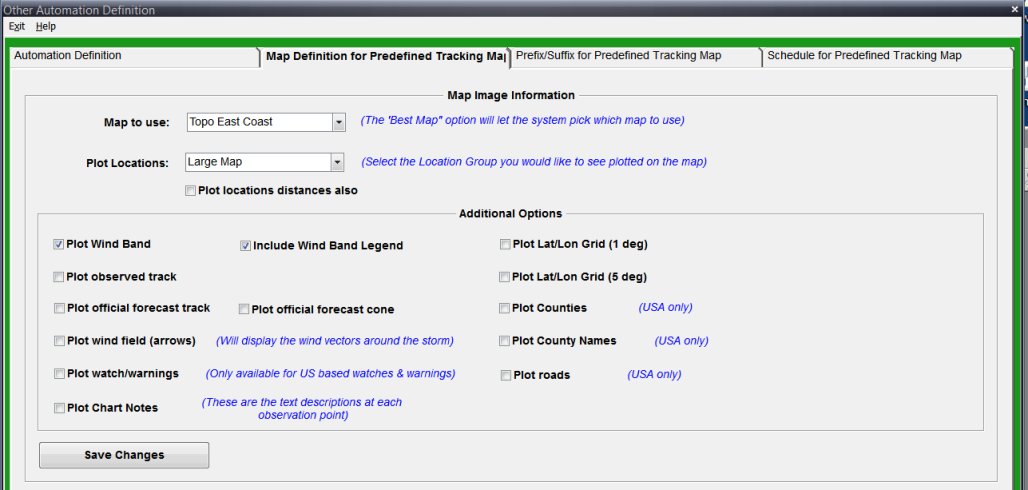
For the Google
Earth Automation, this tab allows the user to define the specific Google Earth
outputs they would like to include within the KML/KMZ file.
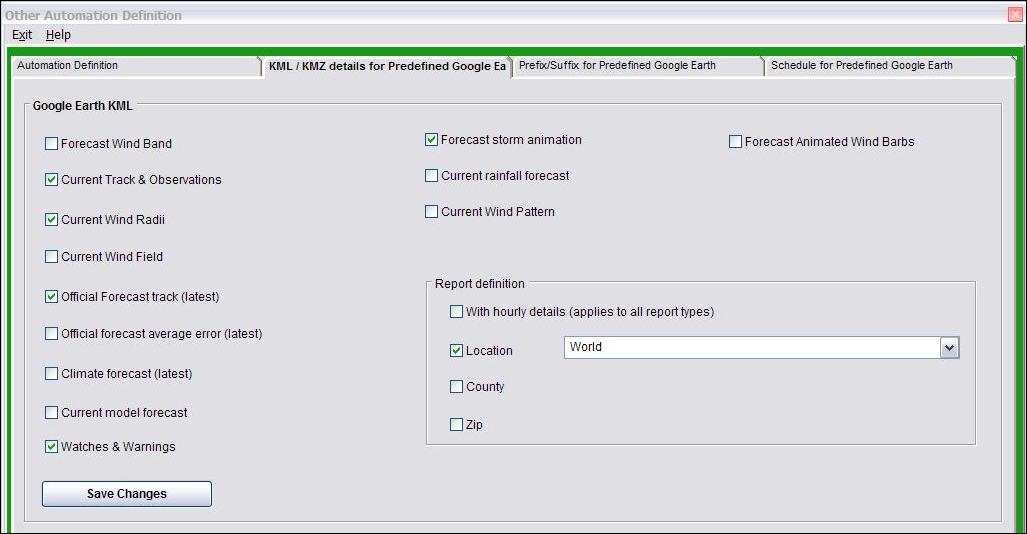
For the Shape
File Automation, this tab allows the user to define the specific Shape File outputs
they would like to include.
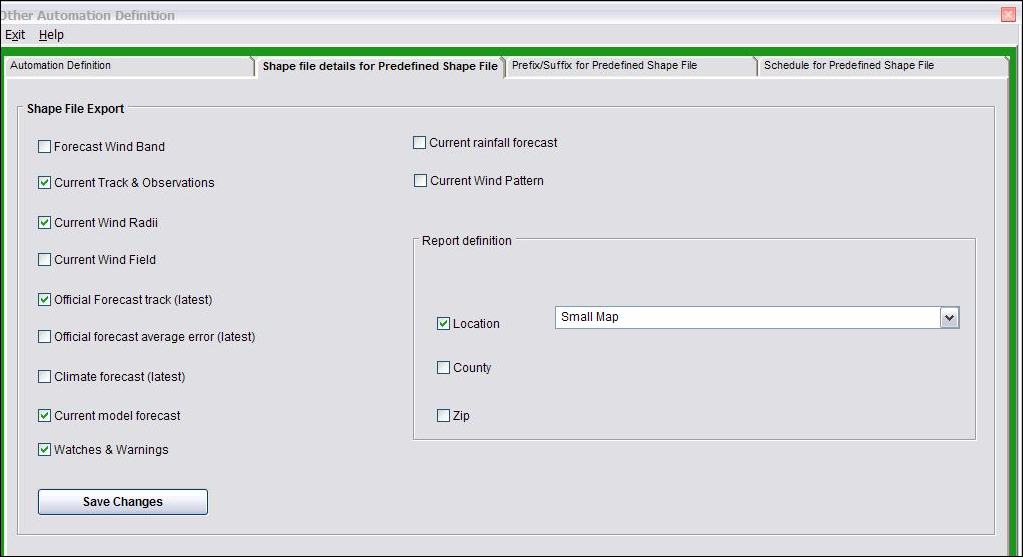
The EXCEL
automation type does not require additional information on this tab.
One
last topic in this section…. Error Assistance…
The Automations
Setup dialog is designed to help you along the way.
It does this by highlighting areas that need correcting as well as changing
the color of the border. So far all of the
examples above show a nice green border… which means “all is well”.
Let’s look at conditions which will cause errors and how they are demonstrated.
The image below
actually shows 2 errors… First no storm basin is selected, next… there
are no storms selected (the Selected Storms option is on).
Correcting each of these will turn the border green (assuming you have no
other errors).

The image below
shows the error condition of selecting to Email the Automation output but not yet
specifying an email address.

For the EXCEL
automation type, when specifying a location group, you must also define the specific
Location Group you would like a report for.

And finally,
similar to the Summary Report setup there is also a “WARNING” type error
conditions. A yellow border will appear if
the Automation is defined correctly but either the ACTIVE or AUTOMATION boxes are
not checked. This is acceptable under certain
conditions.
Remember, an
ALL GREEN border means you have defined a “proper”
Automation. Of course, the output will only
be generated when the Active or Selected Storm option is satisfied.